Future Developments in AI Voice Chatbots to Watch This Year
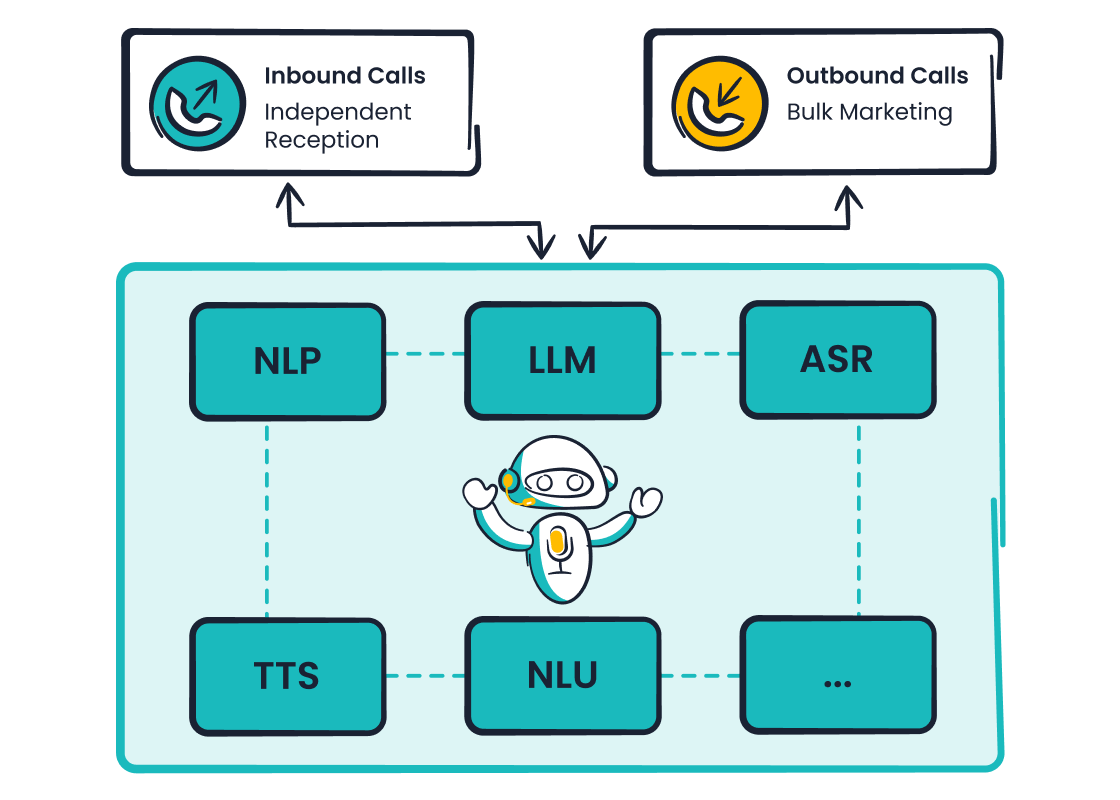
The future of ai voice chatbots promises rapid change across customer service and ecommerce. New voice ai chatbots process voice, text, and images in real time, handling 95% of customer interactions and reducing costs by up to 68%. These chatbots drive business growth by enabling seamless omnichannel support, with 75% of companies adopting such strategies by 2025. Sobot AI Voicebot exemplifies these trends, helping organizations deliver hyper-personalized chatbot experiences and improve customer satisfaction. Businesses should explore ai chatbots for business to remain competitive as the future of chatbots unfolds.
AI Voice Chatbot Trends
NLP Advances
Natural language processing stands at the core of modern ai voice chatbots. Recent advancements in natural language processing allow chatbots to understand context, intent, and even subtle nuances in speech. These improvements help ai agents deliver more accurate and human-like responses. The global conversational ai market is growing rapidly, with projections showing an increase from $12.24 billion in 2024 to $61.69 billion by 2032. Companies now integrate voice assistants into 82% of their operations, and 74% of users report improved speech-to-text accuracy. These ai chatbot trends reflect a shift toward smarter, more responsive chatbot technology.
Sobot Voicebot leverages these advancements in natural language processing to provide seamless, real-time interactions. Its ai agents use advanced speech recognition and LLM technologies to understand and respond to customer needs. This approach reduces wait times and increases satisfaction. As model training data and compute power continue to surge, businesses can expect even more sophisticated conversational ai solutions in the near future.
Note: Nearly two-thirds of consumers want more voice-based ai interactions, highlighting the growing demand for advanced ai voice chatbots.
Emotional Intelligence
Emotional intelligence in chatbots is becoming a key differentiator in customer experience. AI agents now recognize tone, mood, and sentiment, allowing them to respond with empathy and understanding. Studies show that while chatbots offer many functional benefits, users still value emotional connection. For example, a survey of higher education students found that increased chatbot use raised awareness of ai limitations in emotional support. However, hybrid models and enhanced social presence can help bridge this gap.
Large-scale research analyzing over 150,000 chatbot interactions revealed that users often share vulnerable emotions with chatbots, sometimes more than on social media. This trend demonstrates the potential of conversational ai to provide emotional support and culturally attuned responses. Sobot Voicebot incorporates emotion recognition to personalize conversations, ensuring customers feel heard and valued. As ai chatbot trends evolve, emotional intelligence will play a larger role in shaping positive customer experiences.
Multilingual Capabilities
Multilingual support is essential for global businesses using ai voice chatbots. Recent studies confirm that generative ai-powered chatbots outperform rule-based systems in language learning and communication. For example, students using ai chatbots showed significant improvement in oral English proficiency and engagement. These findings highlight the effectiveness of multilingual chatbots in breaking language barriers.
| Study / Source | Key Findings |
|---|---|
| Wang, Cheung, and Chai (2024a) | Generative ai chatbots enable dynamic language processing and adaptive interactions, enhancing multilingual learning. |
| Yuan et al. (2023) | Students improved oral English skills and communication willingness with ai chatbots. |
| Liu et al. (2022) | Chatbot use increased engagement and reading interest in language learning contexts. |
Sobot Voicebot stands out with its robust multilingual capabilities, supporting various languages and dialects for customized interactions. This feature allows businesses to serve diverse customer bases and expand into new markets. As ai chatbot trends continue to emphasize inclusivity, multilingual conversational ai will remain a top priority for organizations worldwide.
Conversational AI in Customer Service
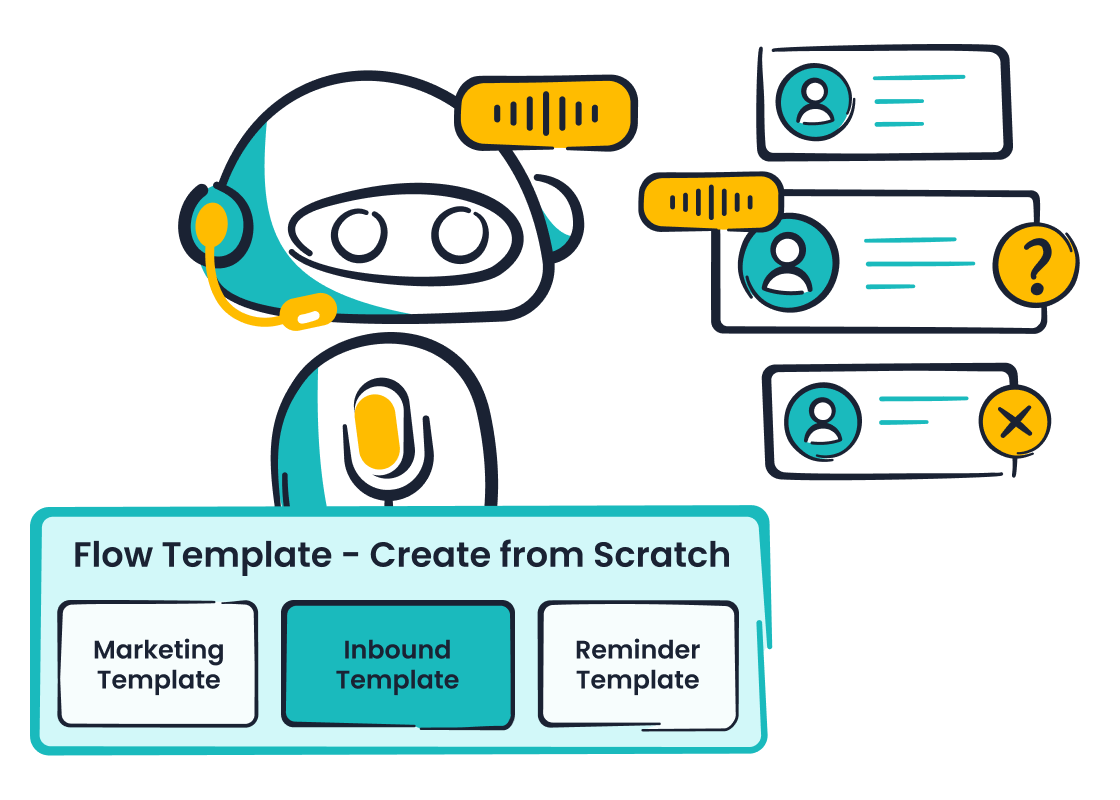
Omnichannel Integration
Omnichannel integration has become a standard for modern customer service. Customers expect companies to manage queries across phone, chat, social media, and email without losing context. Research shows that 66% of customers want seamless support across all channels. AI-powered tools like Sobot Voicebot deliver this unified experience by maintaining conversation history and context, so customers never need to repeat themselves. Chatbots with omnichannel capabilities provide 24/7 availability, instant responses, and consistent service. This approach reduces operational costs by up to 60% and manpower needs by 90%. AI chatbots for business also increase sales qualified leads by 60% and boost customer satisfaction scores by 27%. By automating routine tasks, AI agents allow human staff to focus on complex issues, improving overall service quality and enhancing customer interaction with AI-powered support.
Sobot Voicebot Applications
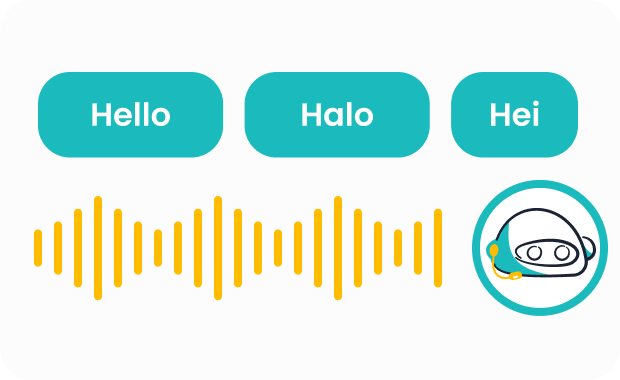
Sobot Voicebot stands out as a leader in enhancing customer interaction with AI-powered support. The platform integrates with existing CRM and contact center systems, supporting both inbound and outbound calls. Its AI agents use advanced speech recognition and natural language processing to understand customer intent and emotions. Sobot Voicebot automates over 90% of interactions, reducing wait times and improving satisfaction. The multilingual feature enables businesses to serve diverse markets, while the visual flow builder allows easy customization. Sobot Voicebot’s seamless handoff to human agents ensures a smooth conversational user experience. These AI-powered tools help companies achieve business growth by increasing productivity and reducing costs.
Real-World Success Stories
Many organizations have seen measurable improvements after adopting conversational AI. For example, Weee!, America’s largest online Asian supermarket, used Sobot Voicebot to overcome language barriers and inflexible IVR systems. After implementation, agent efficiency increased by 20%, resolution time dropped by 50%, and customer satisfaction reached 96%. Other companies report similar results:
- Good Eggs reduced average handling time by 40% with AI chatbots.
- Nom Nom cut first reply time from 3 days to 9 minutes.
- Million Dollar Baby Co. achieved a 45% resolution rate using AI-powered tools.
| Industry | Success Metric / Outcome | Quantitative Result |
|---|---|---|
| Retail | Reduction in “Where’s my order?” calls | 58% fewer calls |
| General | Customer satisfaction (CSAT) score | +15 points |
| Telecom | Billing inquiries resolved by chatbot | 68% resolution rate |
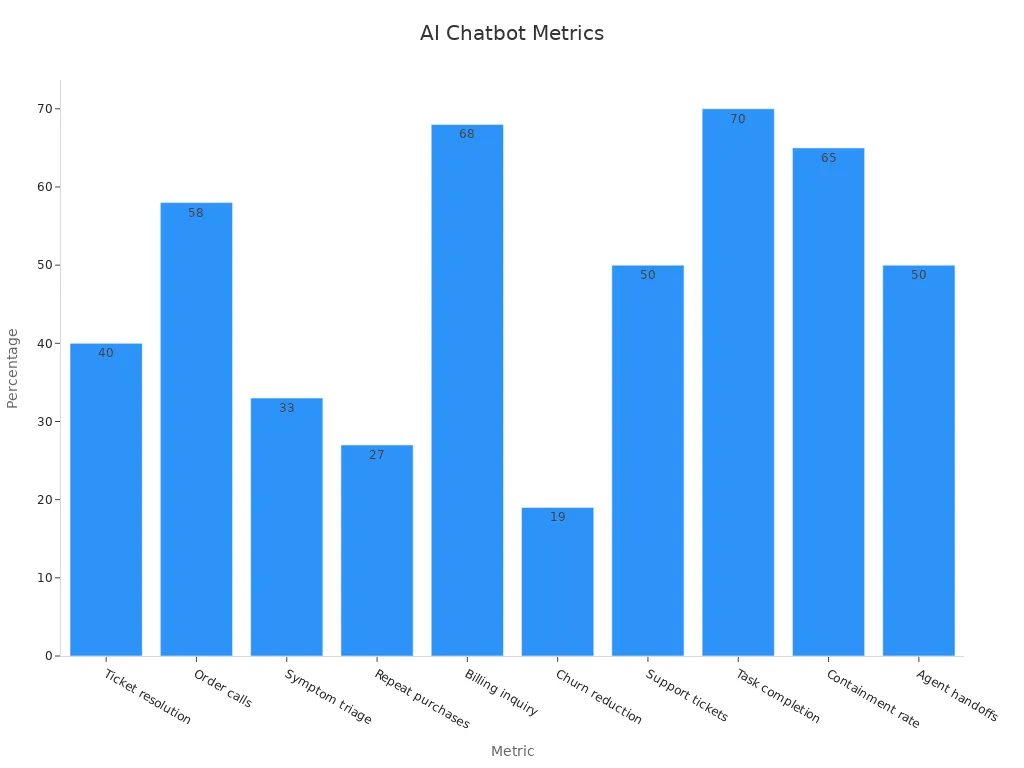
These results highlight how enhancing customer interaction with AI-powered support drives business growth and improves the overall customer experience.
Multimodal and Hyper-Personalized Chatbots
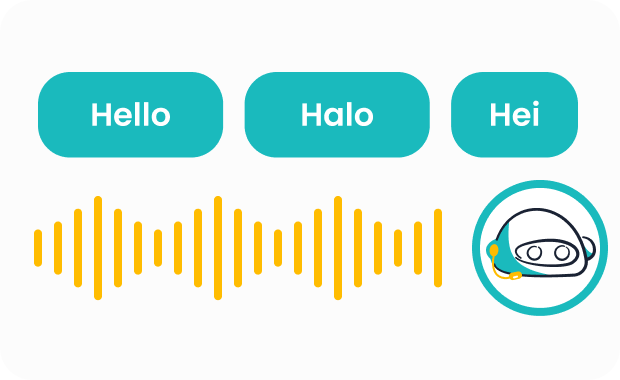
Multimodal Interactions
Multimodal interactions have transformed the way users engage with ai chatbots. These systems now process not only text but also images and audio, creating richer conversations. Recent research analyzed over 146,000 users and more than 747,000 dialogues, revealing that multimodal chatbots outperform text-only versions in key engagement metrics:
- Retention rate: 0.139 for multimodal vs. 0.105 for text-only
- Conversation length: 28.97 vs. 15.77
- User utterance length: 13.16 vs. 13.01
When chatbots align text with audio, retention rises to 0.261 and conversation length reaches 51.53. The presence of images and audio boosts user engagement, making ai-powered chatbots more effective for customer service and ecommerce. Sobot Voicebot leverages these capabilities, allowing businesses to deliver seamless, interactive experiences across channels.
Multimodal chatbots keep users engaged longer and encourage more meaningful conversations.
Hyper-Personalization
Hyper-personalization in ai chatbot systems tailors every interaction to individual preferences. Studies show that anthropomorphic ai chatbots increase perceived product personalization, especially for users who feel lonely. Industry data highlights the impact:
- Netflix saw a 25% sales increase using ai-powered hyper-personalization.
- Starbucks achieved a 50% rise in user engagement.
- By 2025, 85% of companies will use ai chatbots, and 70% of customers prefer ai-assisted support.
Sobot Voicebot uses advanced ai to analyze customer data and deliver personalized responses in real time. This approach builds loyalty and drives revenue growth for businesses.
Data Privacy
Data privacy remains a top concern as ai chatbots become more advanced. Around 40% of voice assistant users worry about how their voice data is handled. Many users express concern after learning about "always listening" features in ai chatbots. Surveys show that 60-70% of UK adults believe smart devices may listen without prompting, and 22% suspect targeted ads result from eavesdropping. Misactivations and human review of recordings add to privacy worries.
Sobot prioritizes data security by offering encrypted backups and GDPR-compliant solutions. The company ensures that its ai-powered chatbots protect user information while delivering efficient support. Businesses must balance convenience with robust privacy controls to maintain user trust.
Future of AI Chatbots
Generative AI Integration
Generative AI is shaping the future of chatbots by making conversations smarter and more human-like. The ai chatbot market growth reflects this trend, with the voice assistant market expected to reach $99.0 billion by 2026 (source). Companies now use large language models such as GPT-4 to power chatbots that predict user needs and personalize responses in real time. The future of chatbots includes:
- Over 80% of companies have adopted chatbot technology.
- 80% of users report positive experiences, with 14% describing them as "very positive."
- Chatbots now support multimodal AI, including voice and video.
- Generative AI enables chatbots to automate complex workflows and improve emotional intelligence.
These advances allow chatbots to deliver seamless, engaging experiences across industries.
Automation and Efficiency
Automation drives efficiency in the future of chatbots. Businesses use ai chatbots to handle repetitive tasks, freeing human agents for more complex issues. The table below shows how different industries benefit from automation:
| Company / Industry | Chatbot Functionality | Efficiency Gains and Impact |
|---|---|---|
| H&M (Retail) | Product recommendations, order tracking | Increased engagement and sales |
| Amazon (E-commerce) | Voice-based shopping, customer support | Simplified shopping, seamless interaction |
| Capital One (Banking) | Account checks, fund transfers, fraud alerts | Automated banking tasks, improved convenience |
| Mayo Clinic (Healthcare) | Appointment scheduling, symptom checking | Reduced wait times, better patient access |
Healthcare case studies show that ai chatbots streamline data collection, triage, and scheduling. This automation improves workflow and patient outcomes. The future of chatbots will see even greater efficiency gains as automation expands.
Sobot’s Vision
Sobot leads the future of chatbots with its "AI-First" strategy. The Five-AI system guides this vision:
- Omnichannel AI covers every customer touchpoint.
- Scenario-based AI focuses on retail and e-commerce.
- Multi-faceted AI includes agents, copilots, and insights.
- Generative AI uses advanced LLMs like OpenAI and Anthropic Claude.
- Secure AI ensures data privacy and compliance.
Sobot’s all-in-one contact center solution integrates voice, chat, ticketing, and WhatsApp Business API. Major brands such as Samsung and OPPO have improved customer satisfaction and efficiency with Sobot’s technology. The future of chatbots will rely on these intelligent, secure, and scalable solutions to drive business growth and customer engagement.
Ethical and Security Considerations
Regulatory Compliance
Regulatory compliance shapes how companies use ai voice chatbots, especially in industries like finance and healthcare. The GAO report (GAO-25-107197) reviews how federal regulators guide the use of ai in financial services. These frameworks focus on model risk management and ai risk factors, setting clear expectations for compliance. In the US, FINRA Rule 3110 requires recording and monitoring of voice communications that could lead to transactions. The EU’s MiFID II Article 16(7) has similar rules. These regulations push companies to use ai for speech-to-text, surveillance, and record-keeping. While these standards do not set numeric targets, they create a strong foundation for responsible ai deployment. Sobot’s solutions help businesses meet these requirements by offering secure, compliant ai voice chatbot systems that support data privacy and regulatory needs.
Security Challenges
Security remains a top concern for ai voice chatbot systems. Companies face risks from weak coding, poor maintenance, and human error. External threats include impersonation, ransomware, phishing, and malware. Hackers may try to access or alter sensitive data. To address these risks, organizations use safeguards such as end-to-end encryption, multi-factor authentication, and secure protocols like HTTPS/TLS. Regular penetration testing and user education also play a key role. The table below summarizes common security challenges and safeguards:
| Security Challenge | Safeguard |
|---|---|
| Data breaches | Data masking, access management |
| Sensitive data leakage | Use policies, security training |
| Lack of transparency | Security audits, risk assessments |
| Phishing and malware | Encryption, secure authentication |
Sobot’s ai-powered contact center solutions use advanced encryption and strict access controls to protect customer data and ensure safe operations.
Trust and Transparency
Trust and transparency drive the adoption of ai voice chatbots. Surveys show that 73.8% of consumers believe ai can reduce wait times, and 71.5% see improved efficiency. However, some users worry about bias in ai decisions and prefer human empathy for complex issues. Satisfaction with ai chatbots remains high, with 74.5% of users reporting positive experiences. Companies can build trust by clearly communicating ai capabilities and limitations. Sobot provides transparent ai solutions, helping businesses explain how their chatbots work and how they protect user data. Open communication and clear privacy policies help users feel confident when interacting with ai systems.
Best Practices for Adopting AI Voice Chatbots
Implementation Steps
Successful adoption of ai voice chatbots starts with a clear plan. Companies should follow these steps for effective integration:
- Prepare fallback mechanisms to handle unexpected queries, such as redirecting to human support or clarifying questions.
- Train the ai model continuously with real user data to improve understanding and response accuracy.
- Set up context management so the chatbot remembers previous interactions, creating a personalized customer experience.
- Integrate the chatbot with external APIs and business systems, like CRM or payment processing, to enable advanced features.
- Enable multi-turn conversations to maintain context and guide the flow.
- Design interactions to feel natural and human-like, using sentiment analysis.
- Monitor performance with ai-driven analytics to identify improvement areas.
- Use customer feedback for continuous learning and adaptation.
- Ensure compliance with data privacy and security standards, such as GDPR.
- Update ai models and scripts regularly to add new features and address issues.
Sobot Voicebot follows these best practices, offering seamless integration and robust security for businesses seeking ai chatbot adoption.
Measuring Success
Tracking the right metrics is essential for evaluating ai chatbot adoption. Companies use ai-driven analytics to monitor both chatbot and human agent performance. The table below shows key metrics and their impact:
| Metric | Description | How It Measures Success |
|---|---|---|
| Deflection Rate | Percentage of customer requests resolved by the chatbot without human intervention. | Shows how well the ai reduces agent workload. |
| Resolution Rate | Percentage of customers who confirm their issue was resolved by the chatbot. | Reflects the chatbot’s effectiveness in solving problems. |
| QA Score | Review of chatbot interactions for accuracy and tone. | Measures quality of customer interaction. |
| Cost Savings | Savings from using ai chatbots versus human agents. | Demonstrates financial benefits. |
| Response Time | Time taken by the chatbot to reply. | Indicates efficiency and speed. |
| Satisfaction | Customer feedback after chatbot interactions. | Shows acceptance and experience quality. |
| Drop-off Rate | Percentage of users who leave before resolution. | Identifies points for improvement. |
Continuous Improvement
Continuous improvement ensures ai voice chatbots deliver lasting value. Companies automate routine tasks, reducing errors and improving consistency. Scalability allows chatbots to handle many conversations at once, even during peak times. Real-time reporting and predictive analytics help teams adjust quickly and personalize service. By integrating with business systems, companies enhance operational efficiency and customer experience strategy. Sobot’s ai solutions use these methods, supporting ongoing optimization and measurable gains. Industry case studies show that ai chatbot adoption leads to higher engagement, lower costs, and improved revenue. Regular updates and feedback loops keep the system aligned with evolving customer needs.
AI voice chatbots continue to shape the future of digital engagement. These chatbots drive faster response times, higher resolution rates, and deeper customer engagement. Sobot Voicebot stands out by delivering multilingual, AI-powered support that boosts operational efficiency and customer satisfaction. Companies adopting these chatbots see up to 50% cost reduction and improved staff productivity. To maximize results, organizations should integrate chatbots with existing systems, monitor key metrics, and update AI models regularly. The table below highlights the impact of these trends:
| Category | Key Metrics / Evidence |
|---|---|
| Customer Experience | Response Time, Resolution Rate, Customer Satisfaction, Net Promoter Score, Engagement Depth |
| Operational Efficiency | Cost Per Interaction, Staff Productivity, System Utilization, Peak Load Performance |
| Business Impact | Conversion Rate, Average Order Value, Customer Retention, Revenue Attribution |
| Cost Reduction | 30-50% reduction in customer service operational costs |
| Competitive Advantage | Early adopters gain superior customer experience, operational excellence, valuable customer insights |
| Future Growth | Projected rapid adoption growth, advanced personalization, emotional intelligence, voice commerce growth |
Companies that embrace ongoing learning and adapt their AI chatbot strategies will stay ahead in a rapidly evolving market.
FAQ
What are the main benefits of using AI voice chatbots for business?
AI voice chatbots automate over 90% of customer interactions. They reduce wait times, cut costs by up to 50%, and improve satisfaction scores. Sobot Voicebot helps companies handle high call volumes and deliver 24/7 support. These tools drive business growth and efficiency.
How do AI chatbots for business improve customer experience?
AI chatbots for business provide instant answers, remember past conversations, and support multiple languages. Sobot Voicebot uses advanced NLP and emotion recognition to personalize responses. Companies see higher Net Promoter Scores and faster resolution times. Customers feel heard and valued.
Are AI voice chatbots secure and compliant with regulations?
Yes. Leading solutions like Sobot Voicebot use end-to-end encryption, GDPR compliance, and regular security audits. These measures protect sensitive data and meet industry standards. Businesses can trust AI chatbots for business to keep customer information safe.
Can AI voice chatbots support multiple languages and channels?
Absolutely. Sobot Voicebot supports various languages and dialects, making it ideal for global businesses. It integrates with phone, chat, email, and social media. This omnichannel approach ensures consistent service and expands market reach.
What is the future of chatbots in customer service?
The future of chatbots includes generative AI, hyper-personalization, and multimodal interactions. AI voice chatbots will automate more tasks, improve emotional intelligence, and deliver seamless omnichannel support. Sobot continues to innovate, helping businesses stay ahead in digital customer engagement.
Tip: For more on Sobot Voicebot and AI chatbots for business, visit Sobot’s official website.
See Also
Best 10 Websites Featuring Chatbots In The Year 2024
Leading 10 Chatbot Solutions For Websites In 2024
Simple Steps To Add Chatbots To Your Website
